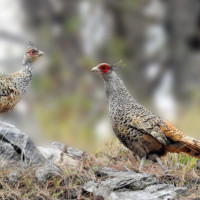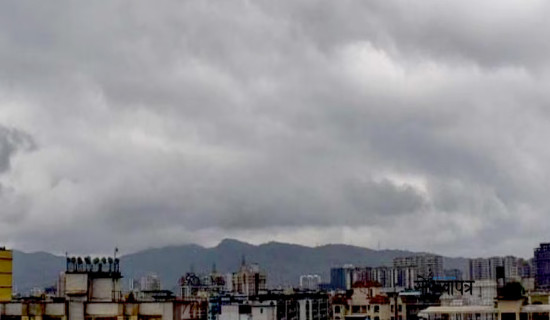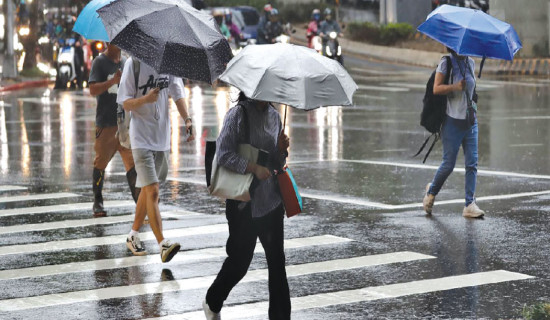- Saturday, 29 November 2025
Dry winter: Prelude to water woes, crop failures and wildfires
Kathmandu, Jan. 12: Nepal has received just 5.7 mm of rainfall this winter, only 9.5 per cent of the seasonal average of 60 mm, indicating the severe drought in the country.
With the continued winter drought over the past few years, concerns have grown over water shortages, crop failures, wildfires and rising air pollution levels.
Winter crops have already started to dry out in many parts of the country due to a lack of rainfall. The main winter crops -- mostly mustard, barley and wheat -- have begun to wither.
Bhojraj Pun of Tulsipur in Dang district has complained that his wheat field has started drying up in mid-winter. He is worried as the plants are withering at a time when they should be blooming. He said he used to cultivate five to six muris (250 to 300 kgs) of wheat and barley during seasons with adequate rainfall, but this year’s dry spell has left his crops in a failing state.
Experts warn of potential water crises and food insecurity if the dry spell continues. Climate change expert Madhukar Upadhya cautioned that the dry winter will have a significant impact on the entire ecosystem.
“For the past three years, Nepal has experienced consecutive winter droughts. Winter rainfall is crucial as it leads to snowfall in the mountains, which serves as a year-round source of water. Without sufficient snowfall, rivers will begin to dry up, affecting water availability and hydropower production,” Upadhya said.
According to him, “The intensity of rainfall remains the same in millimetres, but its volume has increased in certain areas during the summer, while winter sees no rainfall at all. This imbalance could potentially disrupt the entire ecosystem, leading to various crop diseases.”
“Now, the time has come to take this issue seriously. Instead of creating water storage, the government has started constructing walls in the rivers to control monsoon floods, but that is not the solution. Monsoon water should be stored in the ground for the dry period and the time to do that has come,” he said.
Dr. Sudeep Thakuri, Dean at the Mid-West University Graduate School of Science and Technology and a climate scientist, said that there has been no snowfall in the mountains this year. The western disturbance, which is supposed to bring moisture during the winter, was weak this time. "The volume of snowfall may be high during the rainy season, but it will not freeze. Snow needs to freeze in the winter, which is why winter rainfall and snowfall are crucial,” he explained.
Winter snowfall is crucial for pre-monsoon irrigation, but this time, with no snowfall and rainfall, there will be no moisture in the land. “If we start pumping groundwater and there is no rainfall or snowfall, the future consequences could be serious,” he said.
According to Dr. Thakuri, the La Niña phenomenon – the periodic cooling of ocean surface temperatures -- often brings cooler and drier conditions during the winter months. This time, La Niña weakened the western disturbance, resulting in less snowfall in the mountains and reduced winter precipitation across the country.
Sudarshan Humagain, a meteorologist at the Department of Hydrology and Meteorology, informed that according to the available data from the DHM, January has remained drought-affected in several years, including 2006, 2007, 2008, 2009, 2010, 2011, 2016, 2017, 2018, 2023, 2024, and 2025. This trend also indicates that winter droughts have increased in the country, he said.
Bibhuti Pokharel, Chief of the Climate Division under the DHM, said that the DHM had already announced below-average rainfall this winter and the forecast has proven right.
“The drought condition will have both short-term and long-term implications. In the short term, it can affect agricultural production and dry springs, but in the long run, it can impact the entire life cycle. It can have effects on hydropower production, food security, disasters and many other impacts that no one can anticipate,” she said.
According to the DHM, the country experienced winter droughts in 2006, receiving only 7.1 mm of rainfall. The years 2008, 2009, 2016, 2020, 2021, 2023 and 2024 also experienced drought conditions.
















